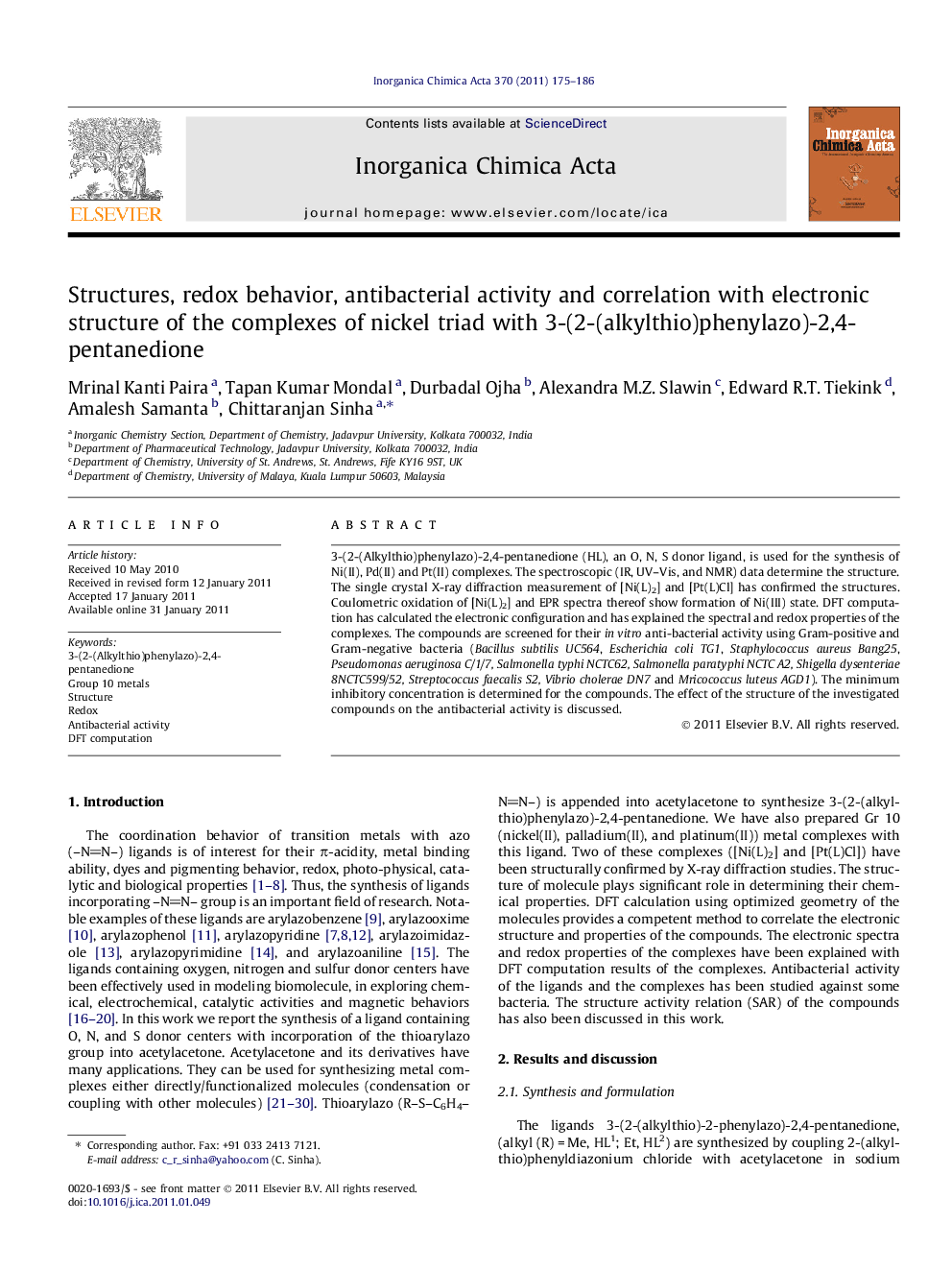| Article ID | Journal | Published Year | Pages | File Type |
|---|---|---|---|---|
| 1306275 | Inorganica Chimica Acta | 2011 | 12 Pages |
3-(2-(Alkylthio)phenylazo)-2,4-pentanedione (HL), an O, N, S donor ligand, is used for the synthesis of Ni(II), Pd(II) and Pt(II) complexes. The spectroscopic (IR, UV–Vis, and NMR) data determine the structure. The single crystal X-ray diffraction measurement of [Ni(L)2] and [Pt(L)Cl] has confirmed the structures. Coulometric oxidation of [Ni(L)2] and EPR spectra thereof show formation of Ni(III) state. DFT computation has calculated the electronic configuration and has explained the spectral and redox properties of the complexes. The compounds are screened for their in vitro anti-bacterial activity using Gram-positive and Gram-negative bacteria (Bacillus subtilis UC564, Escherichia coli TG1, Staphylococcus aureus Bang25, Pseudomonas aeruginosa C/1/7, Salmonella typhi NCTC62, Salmonella paratyphi NCTC A2, Shigella dysenteriae 8NCTC599/52, Streptococcus faecalis S2, Vibrio cholerae DN7 and Mricococcus luteusAGD1). The minimum inhibitory concentration is determined for the compounds. The effect of the structure of the investigated compounds on the antibacterial activity is discussed.
Graphical abstractNi(L)2, [M(L)Cl] (M = Pd(II), Pt(II) and L = 3-(2-(alkylthio)phenylazo)-2,4-pentanedionato) complexes are structurally characterized. Coulometric oxidation of [Ni(L)2] and EPR measurement show formation of Ni(III) state. The compounds are screened for their in vitro anti-bacterial activity using Gram-positive and Gram-negative bacteria. Ni(II) complexes are inactive and Pd(II) complexes exhibit promising activity against some specific microbes and MIC is 10 μg/ml.Figure optionsDownload full-size imageDownload as PowerPoint slideResearch highlights► The ligands containing oxygen, nitrogen and sulfur donor centers are used in modeling biomolecules. ► Thioarylazo (R-S-C6H4-NN-) appended acetylacetone, 3-(2-(alkylthio)phenylazo)-2,4-pentanedione belongs to ONS donor ligand. ► Ni(II), Pd(II) and Pt(II) complexes are reported in this work. Two of these complexes are structurally confirmed by X-ray diffraction studies. ► DFT computation has correlated the spectra and redox properties of the compounds. ► Antibacterial activity of the ligands and the complexes has been studied against some bacteria. The structure activity relation (SAR) of the compounds has also been discussed in this work.
